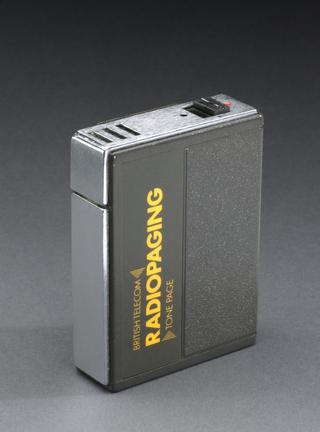
Central Battery transmitter (sectioned), 1903-1926






Sectioned solid C.B. transmitter, made by the British L M Ericsson Manufacturing Company for the British Post Office, Beeston, Nottinghamshire, England, 1903-1926.
The 'solid back' transmitter was designed by Andrew C White of Western Electric in the USA in 1892 and was widely used with telephones for over thirty years in many countries including the USA and the UK. Some were still in use in the 1950s. This version is for CB working. CB stands for 'central battery', or sometimes 'common battery'. This means that the power for the microphone (transmitter) and the bell comes from batteries at the exchange, rather than from a battery mounted close to the telephone. The transmitter uses carbon granules in a capsule between a metal diaphragm and a rear electrode, all held in place by a bridge piece made of solid brass, hence the name.
Details
- Category:
- Telecommunications
- Object Number:
- 1926-641
- Materials:
- plastic (unidentified), metal (unknown), wood (unidentified), glass and copper (alloy)
- Measurements:
-
overall: 190 mm x 200 mm x 110 mm, .9 kg
- type:
- telephone component
- credit:
- Donated by Ericsson Limited




